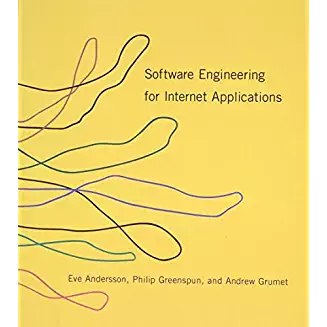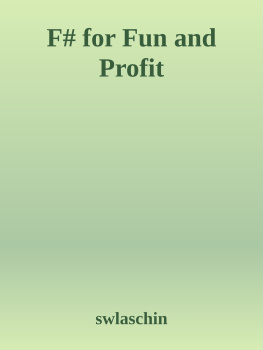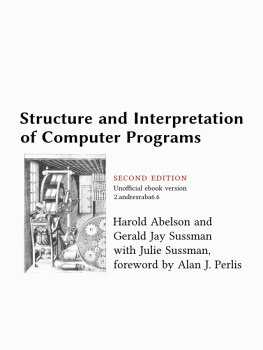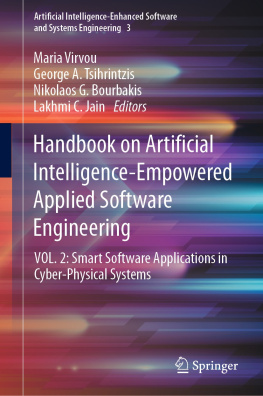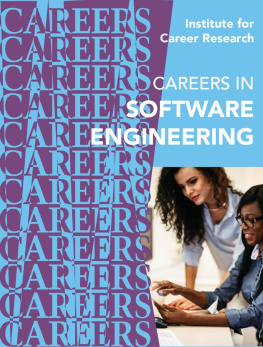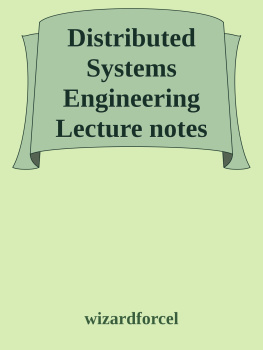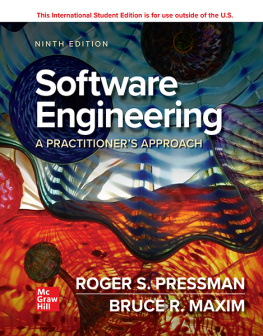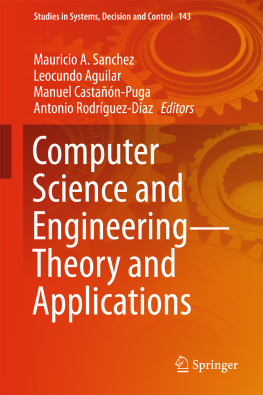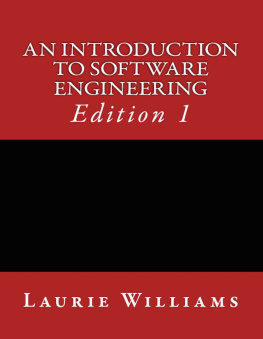it-ebooks - Software Engineering for Internet Applications
Here you can read online it-ebooks - Software Engineering for Internet Applications full text of the book (entire story) in english for free. Download pdf and epub, get meaning, cover and reviews about this ebook. year: 2017, publisher: iBooker it-ebooks, genre: Home and family. Description of the work, (preface) as well as reviews are available. Best literature library LitArk.com created for fans of good reading and offers a wide selection of genres:
Romance novel
Science fiction
Adventure
Detective
Science
History
Home and family
Prose
Art
Politics
Computer
Non-fiction
Religion
Business
Children
Humor
Choose a favorite category and find really read worthwhile books. Enjoy immersion in the world of imagination, feel the emotions of the characters or learn something new for yourself, make an fascinating discovery.
- Book:Software Engineering for Internet Applications
- Author:
- Publisher:iBooker it-ebooks
- Genre:
- Year:2017
- Rating:4 / 5
- Favourites:Add to favourites
- Your mark:
- 80
- 1
- 2
- 3
- 4
- 5
Software Engineering for Internet Applications: summary, description and annotation
We offer to read an annotation, description, summary or preface (depends on what the author of the book "Software Engineering for Internet Applications" wrote himself). If you haven't found the necessary information about the book — write in the comments, we will try to find it.
Software Engineering for Internet Applications — read online for free the complete book (whole text) full work
Below is the text of the book, divided by pages. System saving the place of the last page read, allows you to conveniently read the book "Software Engineering for Internet Applications" online for free, without having to search again every time where you left off. Put a bookmark, and you can go to the page where you finished reading at any time.
Font size:
Interval:
Bookmark:
MIT Press 2006; ISBN 0262511916; order a hardcopy from amazon.com
Chapters:
- (programs that write programs)
- by Cesar Brea
- (mostly for MIT students)
Return to
This is the textbook for the MIT course "Software Engineering forInternet Applications". The course is intended for juniors andseniors in computer science. We assume that they know how to write acomputer program and debug it. We do not assume knowledge of anyparticular programming languages, standards, or protocols. The mostconcise statement of the course goal is that "The student finishesknowing how to build amazon.com by him or herself."
Other people who might find this book useful include the following:
- professional software developers building online communities orother multi-user Internet applications
- managers who are evaluating packaged software aimed at supportingonline communitiesvarious chapters contain criteria for judgingthe features of products such as Microsoft Sharepoint or MicrosoftContent Management Server
- university students and faculty looking to add some structure to a"capstone" project at the end of a computer science degree
If you're confused by the "student knows how to build amazon.com"statement, we can break it down in terms of principles and skills.The fundamental difference between server-based Internet applicationsand the desktop applications that students have already learned tobuild is that server-based applications have multiple simultaneoususers. Coupled with the unreliability of networks, this gives rise tothe problems of concurrency and transactions. Statelesscommunications protocols such as HTTP mean that the student must learnhow to build a stateful user experience on top of stateless protocols.For persistence between clicks and management of concurrency andtransactions, the student needs to learn how to use the relationaldatabase management system. Finally, though, this goes beyond thesimple standalone amazon.com-style service, students ought to learnabout object-oriented distributed computing where each object is a Webservice.
In addition to learning these principles, we'd like the student tolearn some skills. This is a laboratory course, and we want studentswho graduate to be competent software engineers. We'd like ourstudents to be able to take vague and ambitious specifications andturn them into a system design that can be built and launched within afew months, with the features most important to users and easiest todevelop built first and the difficult bells and whistles deferred to asecond version. We'd like our students to know how to test prototypeswith end-users and refine their application design once or twicewithin even a three-month project. When business requirements areextreme, e.g., "build me amazon.com by yourself in three months," wewant our students to understand how to cope with the challenge viaautomatic code generation and use of open-source toolkits whereappropriate.
We can recast the "student knows how to build amazon.com" statement interms of technologies used. By the time someone has finished readingand doing the exercises in this book, he or she will understand HTTP,HTML, SQL, mobile browsers on telephones, VoiceXML, data modeling,page flow and interaction design, server-side scripting, and usabilityanalysis.
This book is available on the Web, at no charge to readers or otheruniversities that adopt the course, at a permanent URL:http://philip.greenspun.com/seia/. If youdon't like it, the authors will happily refund your purchase price.:-)
Eve Andersson, Philip Greenspun, Andrew Grumet
Cambridge, Massachusetts
December 2003
Continue on to
The book is an outgrowth of six semesters of teaching experience atMIT and other universities. So our first thanks must go to our students, who taught us whatworked and what didn't work. It is a privilege to teach at MIT, andevery instructor should have the opportunity once in a lifetime.
We did not teach alone. Hal Abelson and the late Michael Dertouzoswere our partners on the lecture podium. Hal was Mr. Pedagogy andalso pushed the distributed computing ideas to the fore. Michael gaveus an early push into voice applications. Lydia Sandon was our firstteaching assistant. Ben Adida was our TA at MIT in the fall of 2003when this book took its final pre-print shakedown cruise.
In semesters where we did not have a full-time TA, the students' mostvaluable partners were their industry mentors, most of whom were MITalumni volunteering their time: David Abercrombie, Tracy Adams, BenAdida, Mike Bonnet, Christian Brechbuhler, James Buszard-Welcher,Bryan Che, Bruce Keilin, Chris McEniry, Henry Minsky, Neil Mayle, DanParker, Richard Perng, Lydia Sandon, Mike Shurpik, Steve Strassman,Jessica Wong, and certainly a few more whose names have slipped fromour memory.
We've gotten valuable feedback from instructors at other universitiesusing these materials, notably Aurelius Prochazka at Caltech and OscarBonilla at Universidad Galileo.
"The concern for man and his destiny must always be the chief interestof all technical effort. Never forget it between your diagrams andequations."
-- Albert EinsteinA twelve-year-old can build a nice Web application using the tools that camestandard with any Linux or Windows machine. Thus it is worth askingourselves, "What is challenging, interesting, and inspiring aboutInternet-based applications?"
There are some easy-to-identify technology-related challenges. Forexample, in many situations it would be more convenient to interactwith an information system by talking and listening. You're in thebathtub reading New Yorker. You want to know whetherthere are any early morning appointments on your calendar that wouldprevent you from staying in the tub and finishing an interestingarticle. You've bought a new DVD player. You could read the manualand master the remote control. But in a dark room wouldn't it beeasier if you could simply ask the house or the machine to "back up 30seconds"? You're driving in your car and curious to know thepopulation of Thailand and the country's size relative to the state ofCalifornia; voice is your only option.
There are some easy-to-identify missing features in typical Web-basedapplications. For example, shareable and portable sessions. You canuse the Internet to share your photos. You can use the Internet toshare your music. You can use the Internet to share your documents.The one thing that you can't typically share on the Internet is yourexperience of using the Internet. Suppose that you're surfing atravel site, planning a trip for yourself and three friends. Wouldn'tit be nice if your companions could see what you're looking at, pageby page, and speak comments into a shared voice session? If everyonehas the same brand of computer and special software, this is easyenough. But shareable sessions ought to be a built-in feature ofsites that are usable from any browser. The same infrastructure couldbe used to make sessions portable. You could start browsing on adesktop computer with a big screen and finish your session in a taxion a mobile phone.
Speaking of mobile browsers, their small screens raise the issues ofmulti-modal user interfaces and personalization. With the GeneralPacket Radio Service or "GPRS", rolled out across the world in late2001, it became possible for a mobile user to simultaneously speakand listen in a voice connection while using text screens deliveredvia a Web connection. As an engineer, you'll have to decide when itmakes sense to talk to the user, listen to the user, print out ascreen of options to the user, and ask the user to highlight and clickto choose from that screen of options. For example, when booking anairline flight it is much more convenient to speak the departure andarrival cities than to choose from a menu of thousands of airportsworldwide. But if there are ten options for making the connection youdon't want to wait for the computer to read out those ten and you don'twant to have to hold all the facts about those ten options in yourmind. It would be more convenient for the travel service to send youa Web page with the ten options printed and scrollable.
Font size:
Interval:
Bookmark:
Similar books «Software Engineering for Internet Applications»
Look at similar books to Software Engineering for Internet Applications. We have selected literature similar in name and meaning in the hope of providing readers with more options to find new, interesting, not yet read works.
Discussion, reviews of the book Software Engineering for Internet Applications and just readers' own opinions. Leave your comments, write what you think about the work, its meaning or the main characters. Specify what exactly you liked and what you didn't like, and why you think so.

